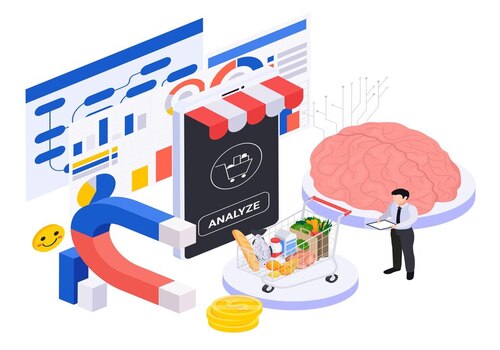Retail Sports Industry
Concerning the Retail Sports Sector
What is the retail sports sector made up of? It describes a sector of the economy that includes retail brands and companies that sell goods for professional sports, fitness, and casual consumers. Wearable technology, clothing, footwear, and specialized items needed for a sport are among the offerings. Swimwear, swim caps, swimming goggles, microfibre towels, swimming earplugs, swimming kickboards, pool shoes, and other items are examples of products related to swimming. In a similar vein, every sport has different needs. Additionally, retail establishments put the necessary goods on the market for their patrons.
How should retail sports outlets be categorized? Retail establishments in this sector, including chains, can be categorized according to the goods they sell and whether they are associated with or own a brand. Certain retail establishments focus solely on a single sport. For instance, a neighborhood shop that exclusively sells swimming gear. This retail establishment, which sells swimming accessories from several companies, may operate as a stand-alone brand. However, it may also be a franchisee or shop that only sells merchandise from that one brand. For instance, a regional franchisee of the international swimming accessory company Speedo.
Another category of sports retail establishments. Retail establishments that sell products for various sports, such as football, cricket, swimming, etc., are a more prevalent format. A retail establishment may also be an independent seller brand in this case, acquiring products without any affiliation with any particular brand. This group includes companies such as Decathlon. Alternatively, a retail location may have a non-exclusive (multi-brand) or exclusive (single-brand) affiliation with one or more franchisors.
Globally, the retail sports sector is expanding at a promising pace. Numerous reasons are contributing to the steady rise in demand for sporting goods. The general public’s increased knowledge of the need of engaging in regular physical activity has led many people to incorporate other sports into their fitness routines. Millennial parents are enthusiastic about their kids’ overall growth, which includes their physical fitness. As a result, more young children are participating in sports like tennis, swimming, martial arts, etc. It is hard for someone to give up their favorite sport once they have fallen into it, even if it is just for fun.
However, the sector is also plagued by a number of current and upcoming issues. For more than a year, the 2020 pandemic has hampered the industry’s growth. Sports activities were put on hold for a while due to safety precautions. Even if things have begun to go in the right direction, a number of previously unresolved issues have reappeared. We talk about these difficulties later. The more significant question is whether retailers are prepared to adapt and change their operations in a new business climate.
How may a retail sports store or business be transformed? The retailers will either need to do this alone or with outside help from professionals. Retailers will need to improve their retail business operations for sustainability and growth, regardless of how they decide to organize and carry out this change. As retail management consultants,TRS provides its retail sports business consulting services to assist retail sports firms worldwide in implementing this change in modest, doable steps.
Obstacles in the Retail Sports Products Sector
Similar Products in Online and Unorganized Markets
Duplicate and similar products abound in the retail sports sector. Additionally, some of these goods are so high-quality that they provide good value. The cost of the imitation goods is lower than that of the originals. This readily draws a large number of unwary clients. Consumers may or may not be aware of this type of lookalikeness or duplicity. However, in the end, these kinds of goods reduce the market share of merchants who offer real, authentic goods. With the premise that “if it is sold here, it must be genuine,” these products occasionally also make their way onto online marketplace platforms that are trusted by consumers. Additionally, industrial brands find it challenging to monitor these parallel markets.

Association of Brands
Consumers are aware that large brands charge more for a variety of reasons, one of which is because they are well-known. At the same time, as alternative and more affordable brands emerge in the retail sports goods marketplaces and product innovation declines, major brands are losing the advantage of premium pricing. Customers no longer find it difficult to switch to these up-and-coming, lesser-known brands when they provide high-quality products. This has impacted the industry’s franchise business model by increasing the degree of unpredictability surrounding brand performance. Going exclusive with well-known brands is costly. New brands have not yet demonstrated their durability.

Online sellers pose a serious threat to physical retailers.
Consumers are aware that large brands charge more for a variety of reasons, one of which is because they are well-known. At the same time, as alternative and more affordable brands emerge in the retail sports goods marketplaces and product innovation declines, major brands are losing the advantage of premium pricing. Customers no longer find it difficult to switch to these up-and-coming, lesser-known brands when they provide high-quality products. This has impacted the industry’s franchise business model by increasing the degree of unpredictability surrounding brand performance. Going exclusive with well-known brands is costly. New brands have not yet demonstrated their durability.

Importing Brands' Competition
In India, a football that costs INR 500 may cost three to four times as much in the US. For another product, it can be the opposite way around. This explains why international trade is so profitable. Retail sports companies who source their goods from a nation with significant cost advantages will be able to sell their merchandise in the host nation at competitive prices in addition to making a profit. Such advantages make it practically impossible for domestic producers and retailers of comparable goods to compete. The finest corporate strategy ultimately prevails, and it steers the entire sector in that direction until a better one is discovered.

Rising Prices for Real Estate
Space is necessary to run a business, whether it be an online or physical store. Companies need room to put up offices, distribution centers, warehouses, and retail locations. Selecting the appropriate sites is crucial. It is difficult to afford space in sought-after business locations due to escalating real estate costs for buying, leasing, or renting. Businesses must bear this financial burden before passing it on to customers. It has an impact on how competitive firms are, particularly brick and mortar businesses that require their storefronts to be situated in desirable neighborhoods or near them. Finding room has grown more challenging, not to mention finding them at lower prices.

Extreme Market Segmentation
There are many options available in every product category in the retail sports goods market today. The requirements for usage vary among users. While some consumers prioritize quality over brand, others are brand-conscious. There is something for every market niche, with prices ranging from affordable to luxurious. The standards are so high, even when it comes to quality, that consumers find it hard to judge and start gravitating toward well-known companies. For instance, there are various kinds of running shoes depending on the needs of the user.
There are shoes designed for leisure exercise, such as walking or gym use, and shoes for professional athletes, such as runners. For a longer product life, some buyers want stronger soles, while others prefer a cushioned base. Every desire and budget can be satisfied with something intriguing. For many other product categories, the same could be true. Deep segmentation is possible. Targeting a specific demographic becomes difficult for businesses since they must use considerable merchandising. For generic sports product stores, assuming a distinctive brand positioning is considerably more challenging.

Finding and Keeping Talent
When selling sports products, store managers, salespeople, and business owners need to have specialized product expertise. As we saw in the last point, personnel at a running shoe store need to be well-versed in the many kinds of running shoes that are on the market. Even seasoned retail consultants in the sports industry are aware of the challenge of hiring staff with domain-specific expertise, particularly for sales executive and store manager roles.
All sectors struggle with talent retention, and retailers in this sector are no exception. Those who do have relevant experience in sports retailing are in great demand because there is a shortage of such workers. The sales team in particular is affected.

Insufficient Knowledge of Store and Business Modernization
Many retail businesses understand that they must modernize and enhance their operations, starting with the operational framework and business strategy. But it’s a huge undertaking. Additionally, a lot of them are unwilling to change the status quo, particularly if the company is already doing well. Alongside this, there is the seldom recognized problem of insufficient experience and skills in implementing retail transformation. It’s possible that few proactive businesses would have changed on their own. A few minor steps in that direction might have been done by few. However, this much-needed process is made simpler and faster with the help of a knowledgeable and professional team.
Why TRS
We have been consulting on retail and eCommerce businesses for more than ten years. Over the years, we’ve worked with numerous clients across various industry sectors. We are a new international consulting firm with a strong presence in the Middle East, South Africa, and India.
Since many traditional retail sports stores are finding that they must change, we assist our clients in realigning their businesses to the relevant and modern market demands and business environment. Furthermore, we’re not simply talking about visual modernization. In general, we strive for:
- Changing company strategy to create a distinctive brand positioning.
- Creating trustworthy business plans.
- Creating functional strategies that work.
- Organizing for efficient departmental and retail operations.
- Getting digital marketing to operate well.
- Effective inventory control.
- Optimized layout planning for stores and warehouses.
- Improved handling of talent.
The implementation of strategic digital transformation is another important aspect of modernization in the retail sports sector. We provide help in developing the business-IT strategy, determining the digital needs, and putting the solutions into action for specific clients. In our retail sports consulting services, we assist customers in identifying the types of digital technologies that could improve their company’s operational efficiency and development and expansion prospects.
As seasoned retail advisors in the sports sector, we consistently stress that single-channel retail sports businesses should now prioritize omnichannel. Our knowledgeable staff of sports retail experts assists companies in implementing omnichannel in a methodical, planned, and strategic way. We specialize in offering solutions for cross-channel expansion, whether it is an eCommerce player seeking to develop a physical presence or a physical store planning to go online. With optimized omnichannel operations, we guarantee that our clients have a failsafe plan for providing a flawless customer experience.
Retail sports businesses will also need to update their business strategies if they want to successfully compete with other physical retail establishments and their online equivalents. The purpose of our business model development services is to accomplish this. Here, we determine and specify the UVP for the retail sports business owned by our clients. The development of the operational roadmap, channel strategy, and technology requirements are also covered. The value chain and internal capabilities needed to successfully and efficiently provide the specified UVP will be mapped and defined by our team.
Planning is necessary before attempting any kind of business transformation, no matter how big or small. Relevant informational inputs are essential for effective planning. Both internal and external market research provide these inputs. Assimilation of the internal data is easy. However, in order to collect external data and information, market research is necessary. One of our initial offerings is online market research, in which we conduct in-depth analyses and evaluations of our clients’ target audiences. Finding potential market niches and the best ways for clients to cater to them are the goals. Action recommendations and calls to action will be a part of our reports.
Send us a message to learn more about our retail sports consulting services for both online and physical businesses, and a member of our staff will get in touch with you as soon as possible to arrange a callback.





